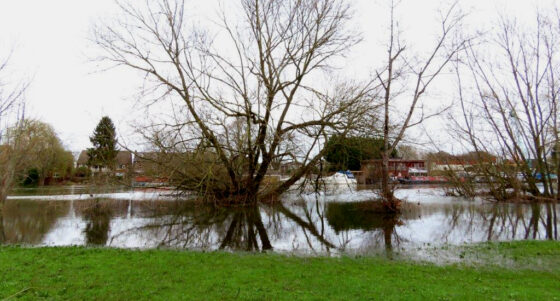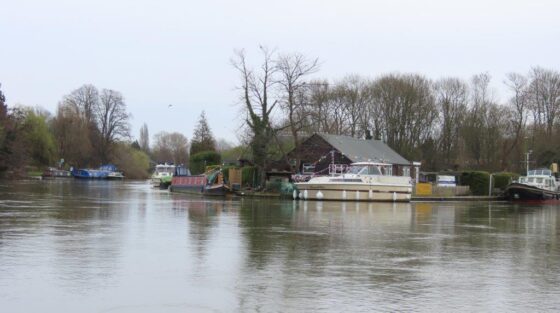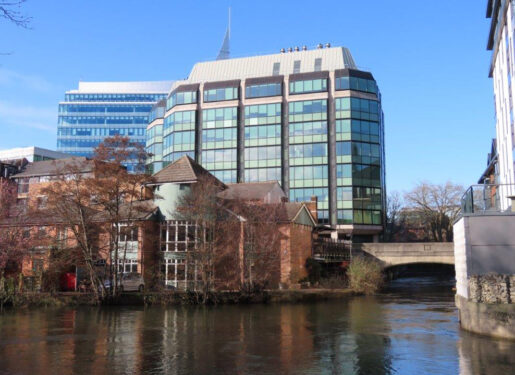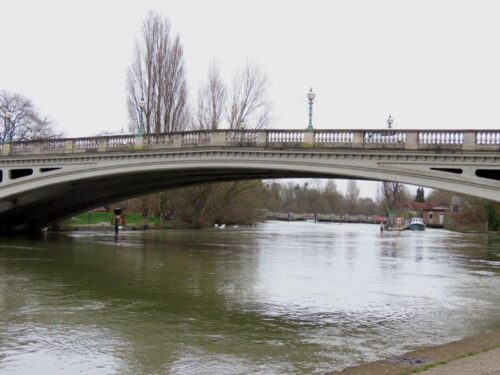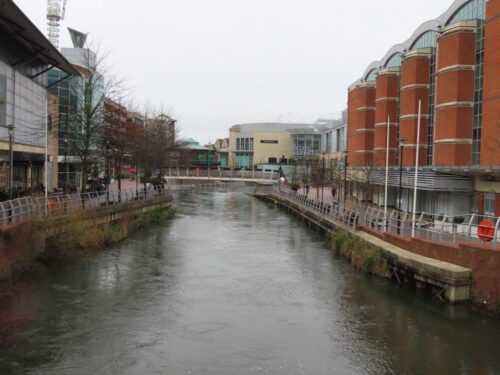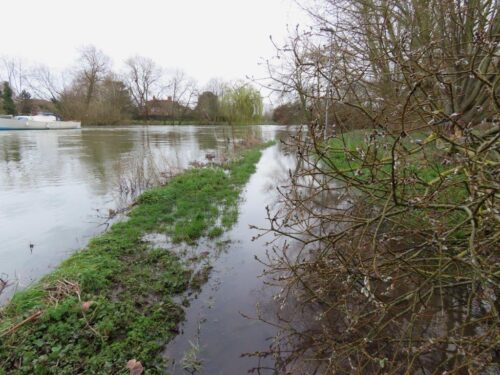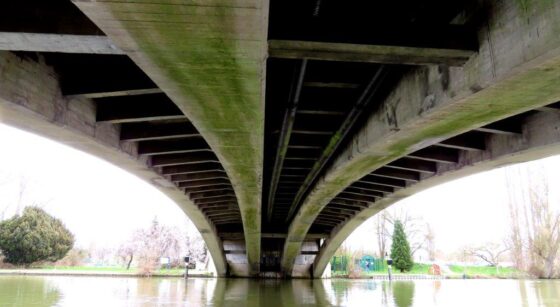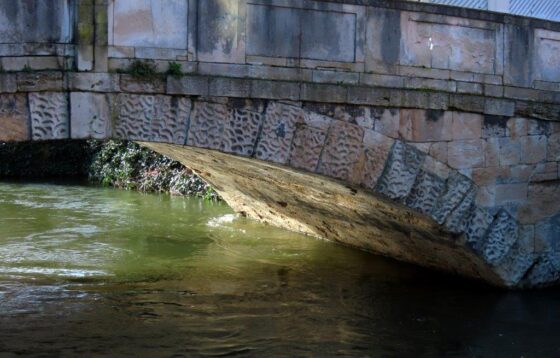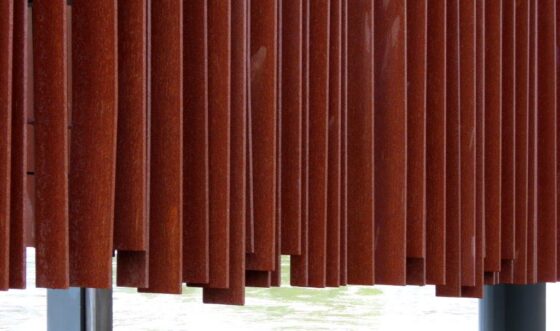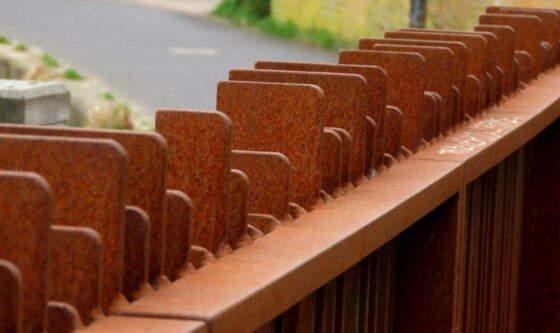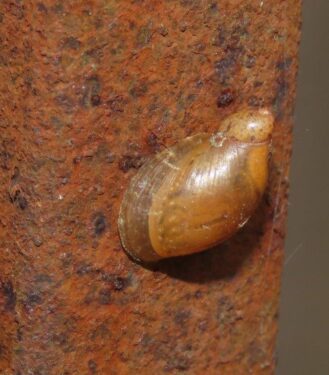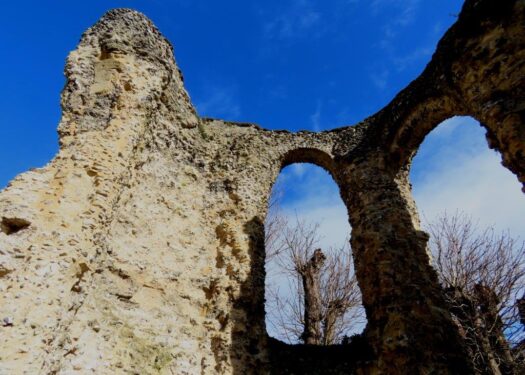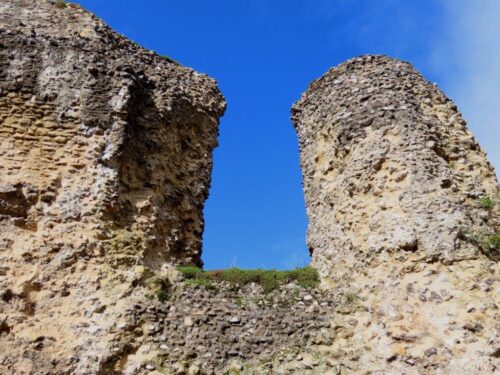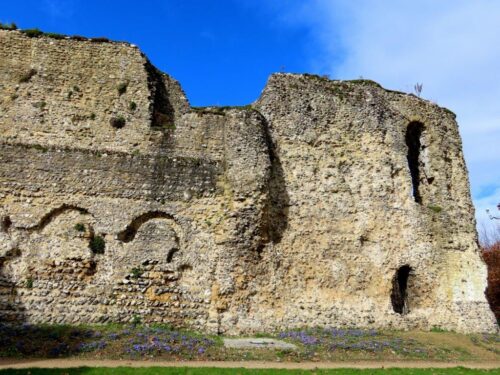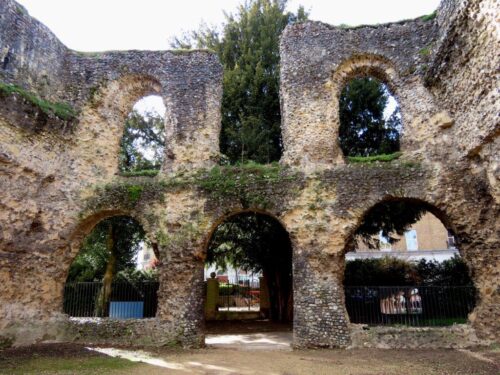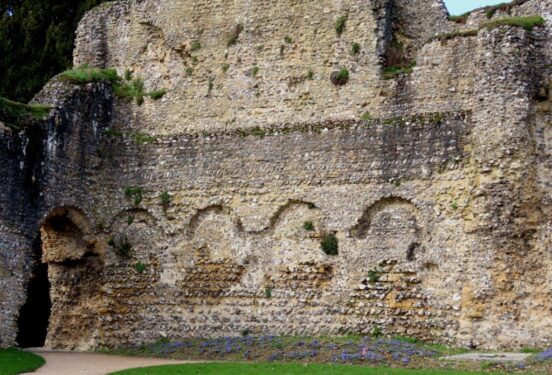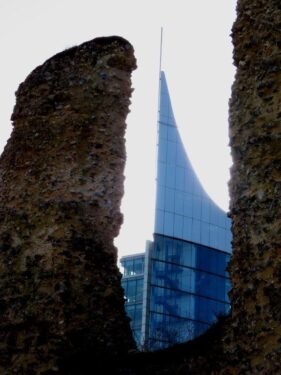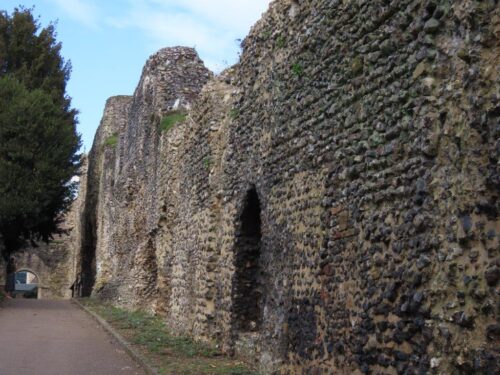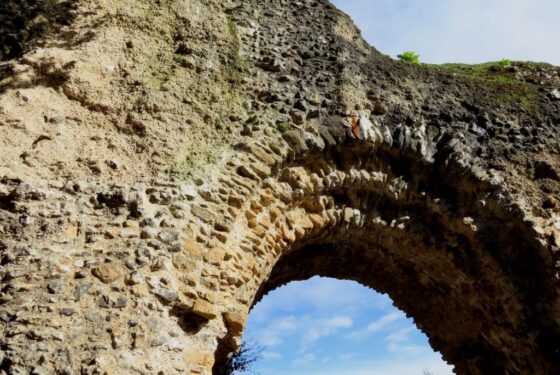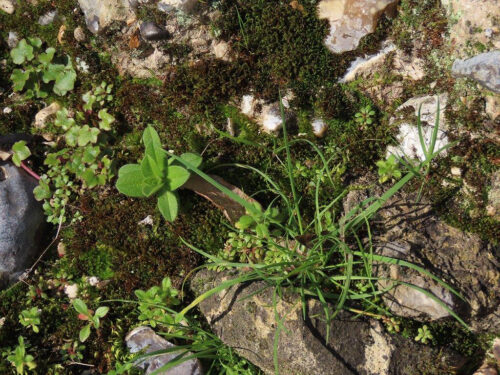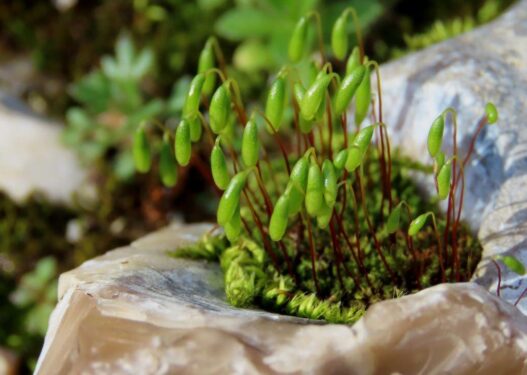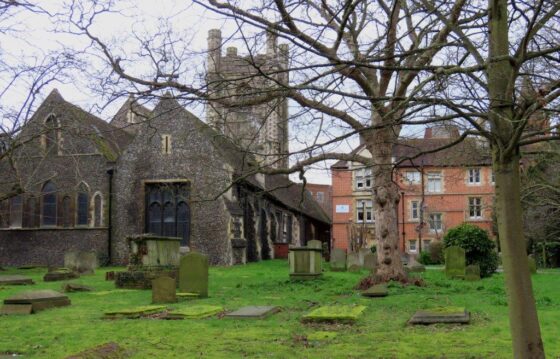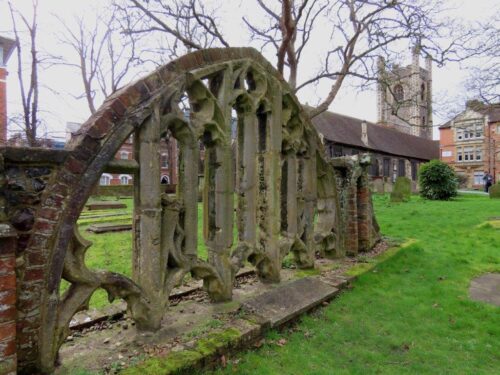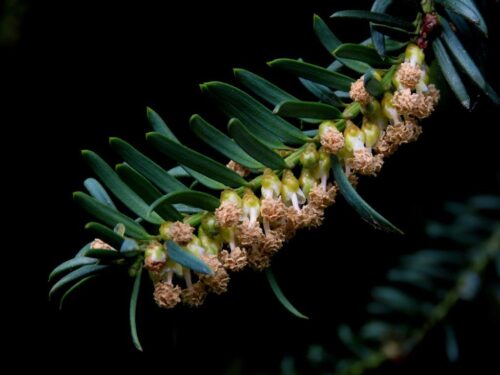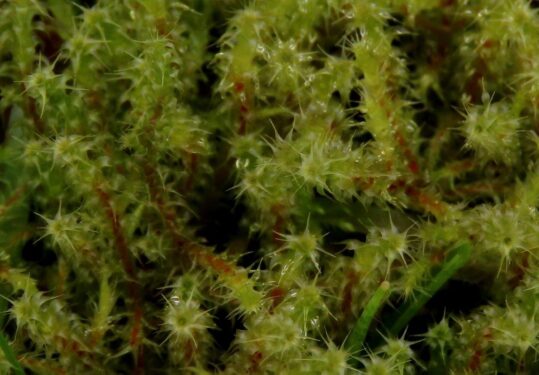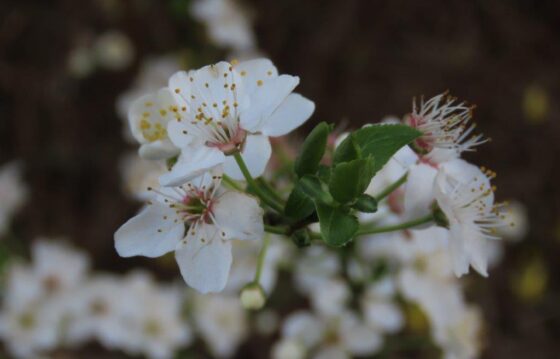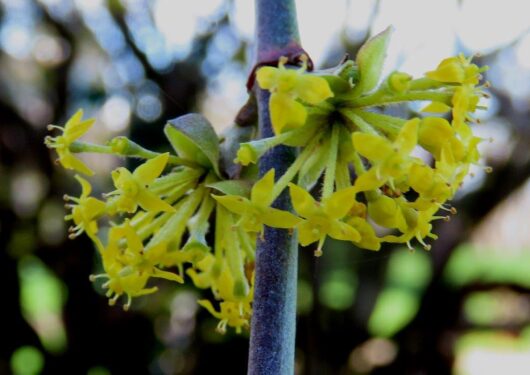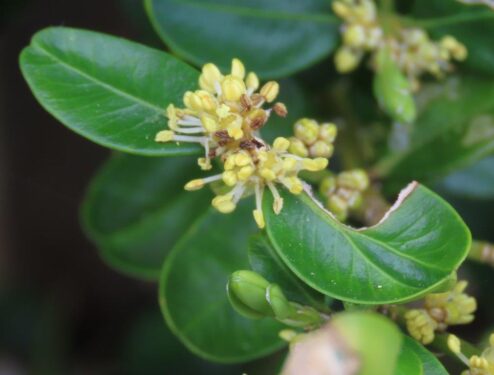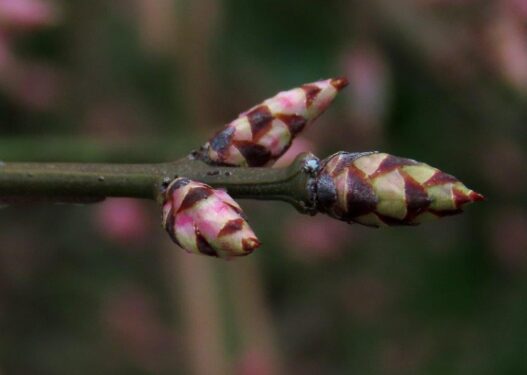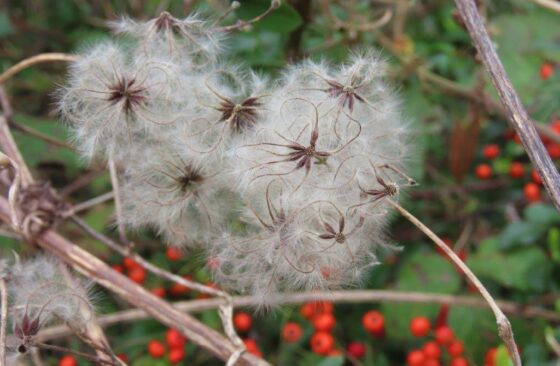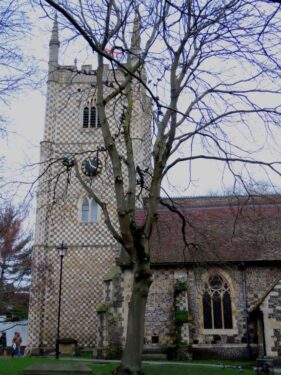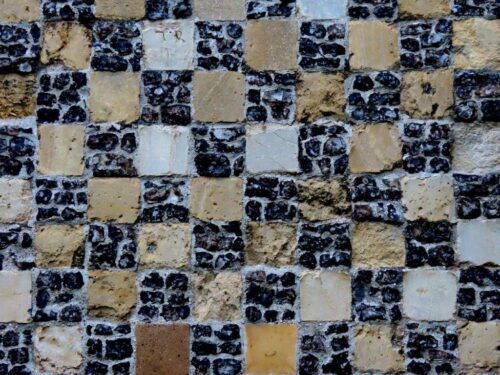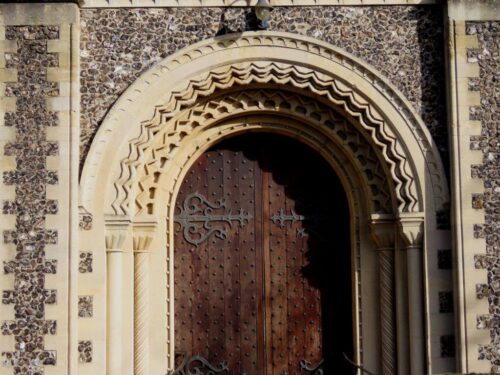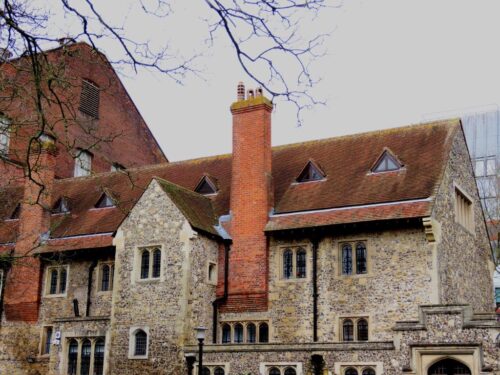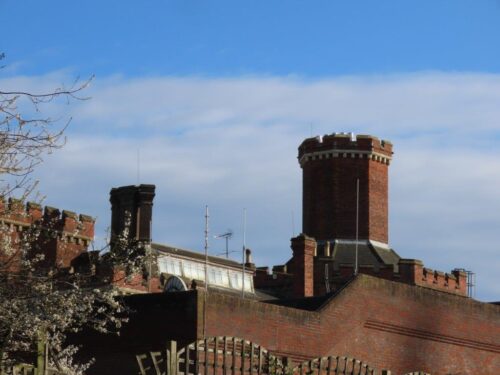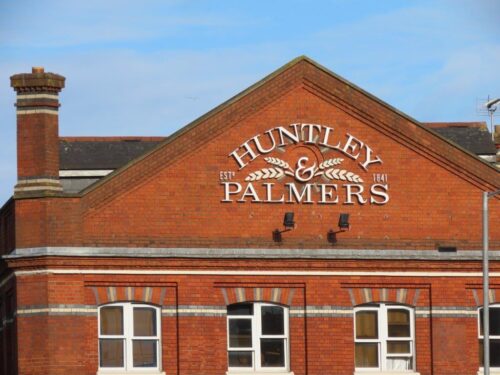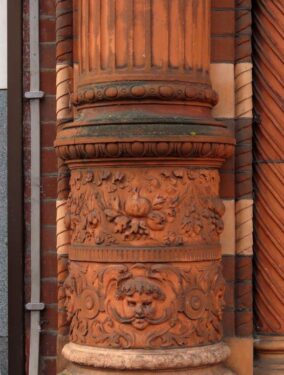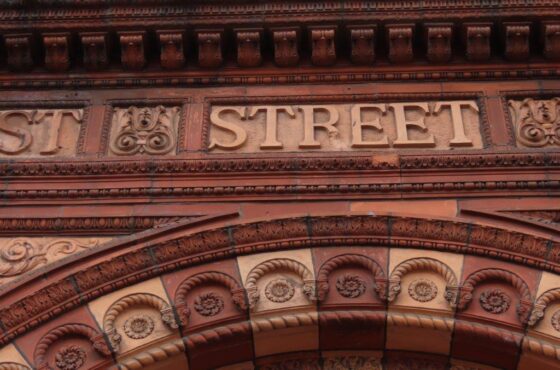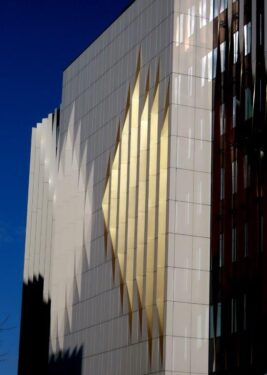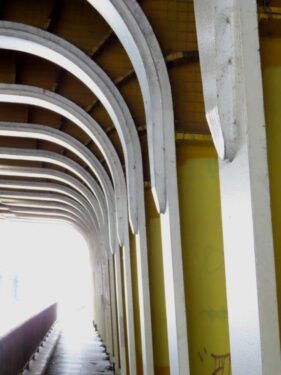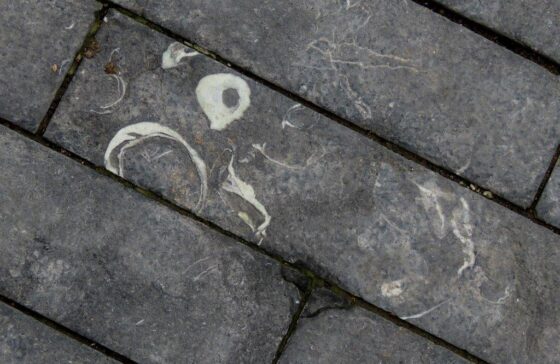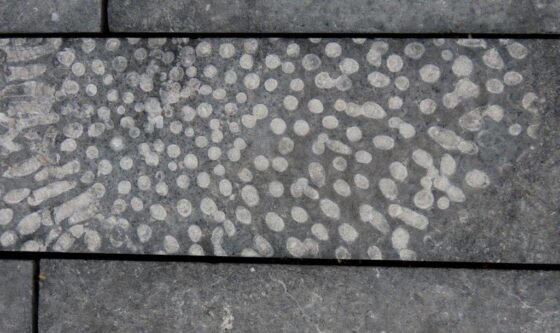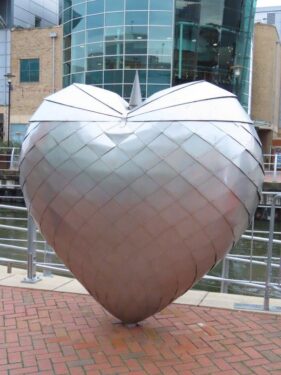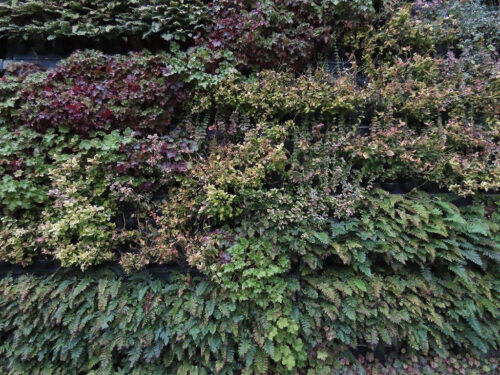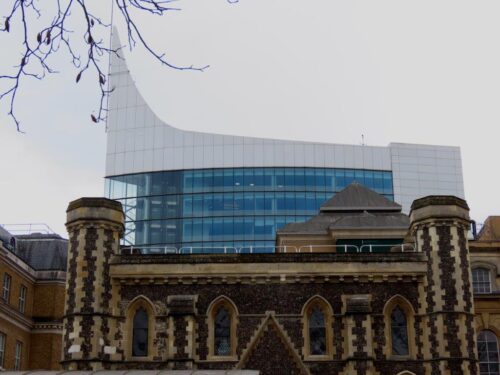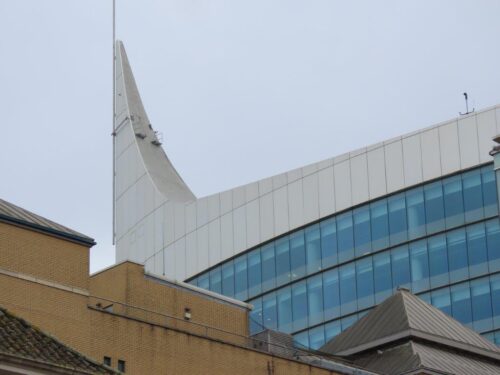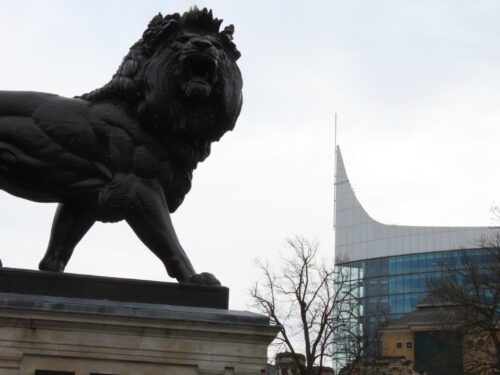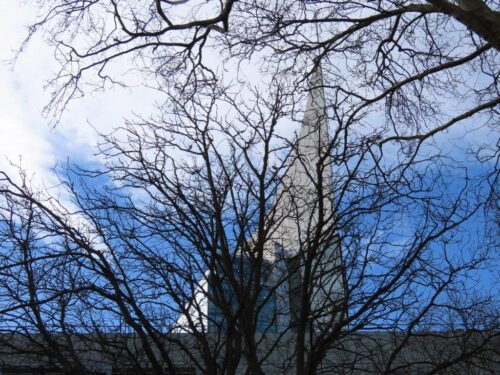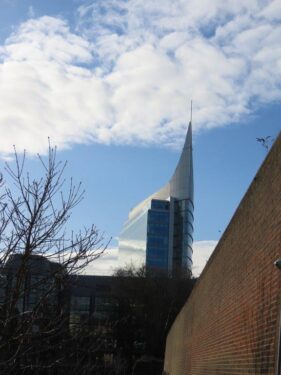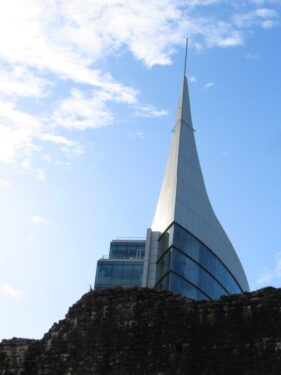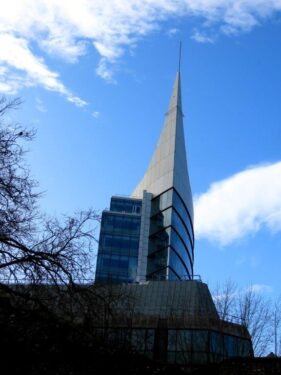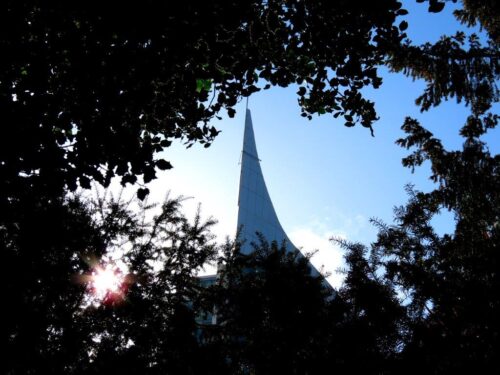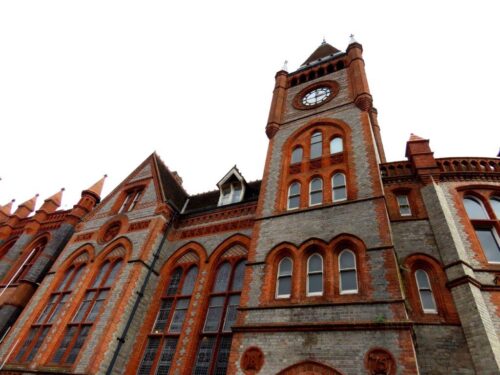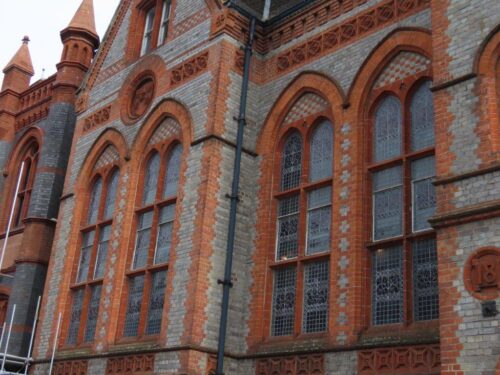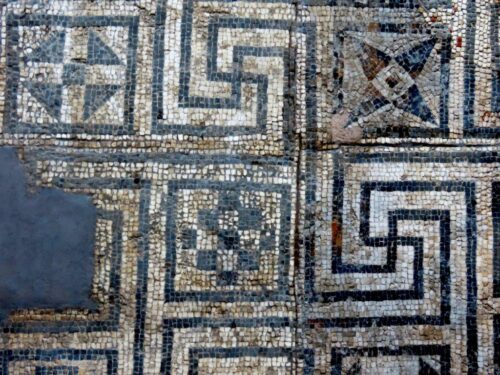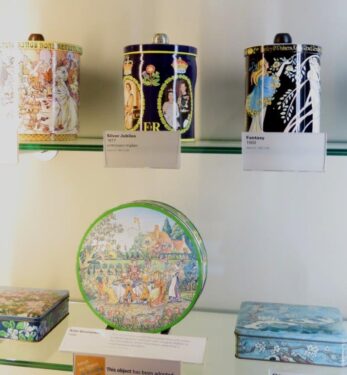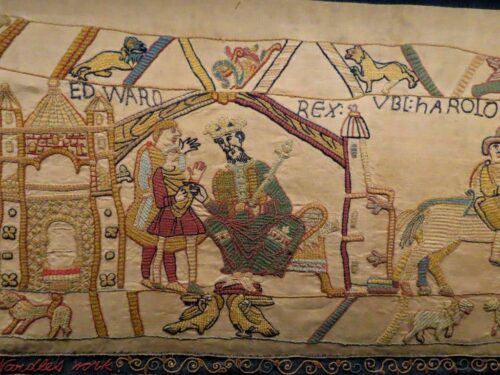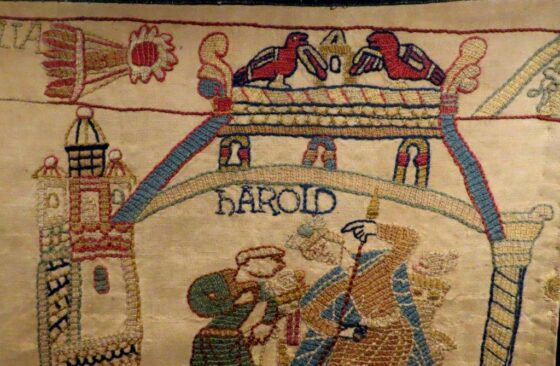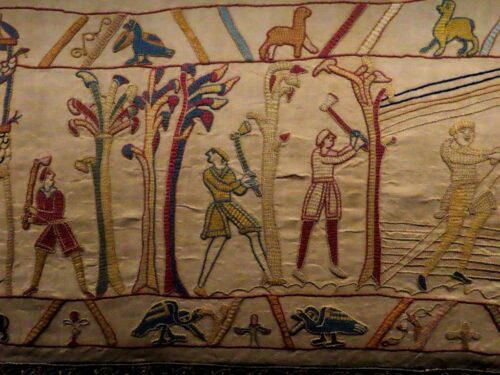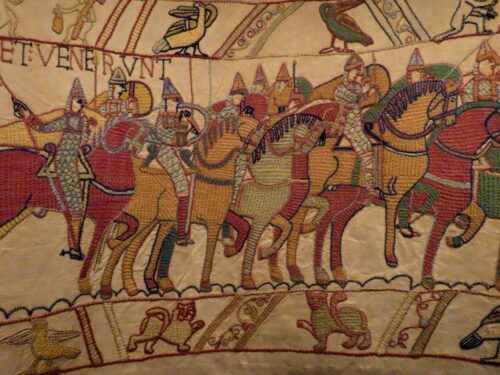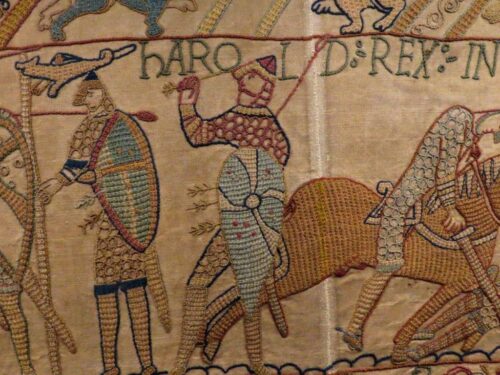Continuing our series of short breaks in places no-one thinks about visiting for fun, we headed to Reading. It was a trip dominated by water: a deluge on the third day, and both the Thames and Kennet brim full and in full spate after the rain of the past few months.
Indeed, such was the flooding that our planned walk along the Thames Path and back along the Kennet soon came to a sploshy premature conclusion:
Rivers mean bridges and railings, always a good opportunity for photos…
… while pond-snails foraged on the rusty rails, presumably scraping up algae and camouflage at the same time.
Of course we knew about the rivers in advance, but what we were not prepared for was the history in the town. The Abbey Ruins especially were impressive, made all the more alluring by the fact that it was then the sun came out for the only time, and the skies cleared to crystalline blue.
As with ancient walls everywhere, the stonework provides ample niches for microcosmic gardens, each packed with biodiversity. Only Whitlow-grass in flower right now, but imagine what they will be like in a short few weeks’ time…
Churchyards as always were filled with life, from flowering Yews to moss-sprung turf …
… with parks and plantings starting to bloom and bud-burst after the winter slumber. Here, Cherry-plum, Cornelian-cherry and Box in flower, with the beautiful buds of Winged Spindle, and last year’s filigree festoons of Old Man’s Beard:
Interesting old buildings everywhere, including the Minster and its patterned walls…
… to more recent, yet still fascinating buildings reminding us of the half-remembered features of the town: the Gaol and biscuits!
And so to the unashamedly modern: glass and underpasses, fossils in the pavements, sculpture and living walls:
… while from almost every angle, The Blade watches benevolently overhead, competing for attention only with the Red Kites.
And finally the main reason for our visit: the Museum, itself housed in an impressive building …
… filled with everything from biscuit tins to Roman artefacts from the nearby Silchester:
… and the replica of the Bayeux ‘Tapestry’. A Victorian facsimile, this is full scale, 70 metres long, and was featured in a BBC art series a couple of years ago. It was this that meant we found ourselves in the town, but as with so much about Reading we were wholly unprepared for the impact it would have on us. An hour walking slowly round the gallery was like being immersed in a living graphic novel, and at the end we felt we had been through the carnage of the battle. As good a reason as any to go to Reading, just to see that.
